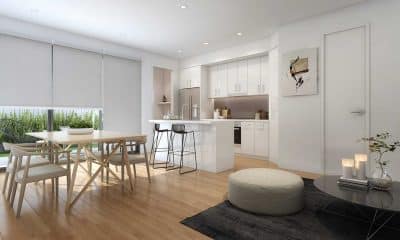
The Evolution of Acoustic Considerations in Contemporary Design
Sound has always played a significant role in shaping our experience of architecture. In sacred spaces and performance halls, acoustics have been a priority for centuries. But in residential design, serious attention to sound control is a relatively recent shift—driven by new lifestyles, open-plan layouts, and demand for acoustic comfort in every corner of the home.
Today’s luxury residences are expected to deliver more than visual elegance. They must Eduard Raducan sound as good as they look. Clients want seamless transitions between entertainment zones and quiet retreats. They expect home theaters, gyms, spas, and even bedrooms to deliver acoustical performance equal to that of commercial spaces.
That’s why leading firms are partnering with companies like Sound Pro Solutions, who work directly with architects to integrate sound control strategies from the earliest design phases. These collaborations ensure that acoustic performance is baked into the architecture—not retrofitted after complaints arise.
Understanding the Science Behind Residential Acoustics
Sound Transmission Fundamentals in Modern Construction
Sound moves through both air and structure. In homes, transmission can occur through walls, floors, ceilings, and even ductwork. There are two main types of sound to manage: airborne (such as voices and music) and structure-borne (including footsteps and mechanical vibration).
Modern residential projects face unique challenges. Lightweight materials, glass walls, and minimalistic finishes may look beautiful—but they reflect and transmit sound easily. Without intentional design, these materials can turn luxury homes into echo chambers or noisy highways.
Material Properties and Acoustic Performance
Every material used in a home contributes to the acoustic profile. Dense materials, such as concrete and brick, provide sound insulation. Soft, porous materials like fabric or acoustic insulation help absorb sound and reduce reverberation.
Architects must balance these qualities carefully. A minimalist home with exposed surfaces may need hidden absorptive layers. A media room might require layered assemblies with mass-loaded barriers, decoupling systems, and precision detailing. It’s not just about aesthetics—it’s physics in action.
The Role of Building Envelopes in Sound Control
The building envelope plays a critical role in isolating interior spaces from environmental noise. Windows, exterior walls, and roofs must block traffic, wind, neighbors, and city noise—especially in urban or coastal high-end properties.
Advanced glazing, weather seals, resilient wall assemblies, and roof deck isolation all contribute to the overall performance of the building. Proper detailing at connection points ensures these systems perform consistently across the structure, not just in theory.
Design Strategies for Acoustic Excellence
Zoning and Spatial Planning for Sound Management
Thoughtful spatial planning is the foundation of residential acoustic performance. Private and noise-sensitive areas—like bedrooms, offices, or meditation rooms—should be buffered from high-activity zones like kitchens, gyms, and entertainment spaces.
This begins with smart layout decisions, such as separating floors by function, grouping noisy rooms, and using transitional zones (closets, storage, hallways) as passive sound buffers. Architects increasingly think in acoustic zones, not just visual flow.
Architectural Elements as Acoustic Tools
The architecture itself can be a noise management system. Ceilings, walls, and floors aren’t just barriers—they can be tuned. Coffered ceilings, curved walls, and double-height volumes can all affect how sound behaves in a space.
Even seemingly aesthetic features—like wall paneling, suspended lighting, or custom millwork—can incorporate acoustic treatments. These dual-purpose elements allow designers to meet performance goals without compromising visual intent.
Integration with HVAC and Mechanical Systems
Mechanical systems often generate the most disruptive noise in a luxury home. Poorly isolated HVAC units, duct resonance, and plumbing stack vibration can undermine even the best soundproofing.
Integrating acoustic strategy with MEP design early in the process is essential. That means vibration isolation for equipment, duct lining for sound attenuation, and proper routing to avoid noise bleeding into sensitive rooms. Sound control doesn’t stop at the walls—it extends to every system in the building.
Advanced Sound Control Technologies in Luxury Homes
High-Performance Acoustic Materials and Systems
Today’s market offers a broad range of high-performance acoustic materials tailored to luxury design. From multi-layer wall assemblies with sound-damping membranes to modular ceiling panels and high-STC doors, the options are both effective and design-forward.
Invisible acoustic treatments are also gaining ground—spray-on acoustic plaster, laminated glass, and perforated millwork backed with absorptive layers allow designers to hit targets without drawing attention to the solution.
Smart Home Integration for Dynamic Sound Management
Sound control isn’t static anymore. Smart home systems now integrate acoustic comfort into their automation logic. Adaptive sound masking, motorized acoustic panels, and dynamic ambient noise balancing can all be controlled via an app or voice assistant.
This level of precision allows homeowners to adjust their sound environment in real time—lowering ambient noise for sleep, raising it for parties, or blocking exterior noise at certain hours. Acoustic comfort becomes responsive, not fixed.
Custom Solutions for Unique Architectural Challenges
No two homes are alike, especially in custom architecture. Complex volumes, non-standard materials, and site-specific noise sources all require tailored solutions.
Whether it’s isolating a rooftop pool from a master suite below or managing echo in a 40-foot glass atrium, each challenge requires detailed modeling and product selection. This is where firms like Sound Pro Solutions provide essential value—delivering performance without compromising design.
Professional Installation and Quality Assurance
No matter how advanced the system, performance hinges on execution. Acoustic materials require precise installation to function as intended; gaps, misalignment, or incorrect layering can compromise performance.
That’s why top firms rely on vetted installation teams and acoustic consultants who stay involved through construction. Site testing, field verification, and post-installation tuning ensure that what was promised on paper performs in the real world.
Collaboration Between Architects and Acoustic Specialists
Acoustic performance isn’t something that can be tacked on at the end. It needs to be integrated into the architecture from day one. That’s why successful luxury residential projects often include an acoustic consultant as part of the core design team.
These specialists translate abstract goals—such as privacy, serenity, and clarity—into technical requirements. They help model sound behavior, recommend materials, and coordinate with structural, mechanical, and interior design teams to ensure cohesion.
The best outcomes happen when collaboration is proactive. Architects define the spatial and aesthetic vision. Acoustic experts bring the performance knowledge to support it. Together, they create homes that sound as extraordinary as they look.
Whether it’s a hillside estate, a penthouse in a dense urban core, or a multi-generational compound, acoustics are now a mark of true architectural completeness. In the world of high-end design, silence is not absence—it’s precision.








